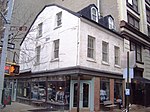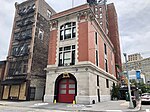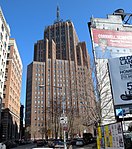Frenchette
2010s in Manhattan2018 establishments in New York CityJames Beard Foundation Award winnersRestaurants established in 2018Restaurants in Manhattan ... and 1 more
Tribeca
Frenchette is a restaurant in TriBeCa, New York City which opened in April 2018. It won the James Beard Foundation Award as Best New Restaurant in 2019. It is owned by chefs Riad Nasr and Lee Hanson and is named for David Johansen's 1978 song "Frenchette". The menu includes a mix of modern and traditional French with dishes like escargots, tortilla espanola and spaghetti with shaved bottarga. Nasr and Hanson worked together since 1997 at Keith McNally's restaurants, Balthazar, Pastis and Minetta Tavern, before opening Frenchette.
Excerpt from the Wikipedia article Frenchette (License: CC BY-SA 3.0, Authors).Frenchette
West Broadway, New York Manhattan
Geographical coordinates (GPS) Address Nearby Places Show on map
Geographical coordinates (GPS)
| Latitude | Longitude |
|---|---|
| N 40.719658 ° | E -74.005752 ° |
Address
West Broadway 243
10013 New York, Manhattan
New York, United States
Open on Google Maps




